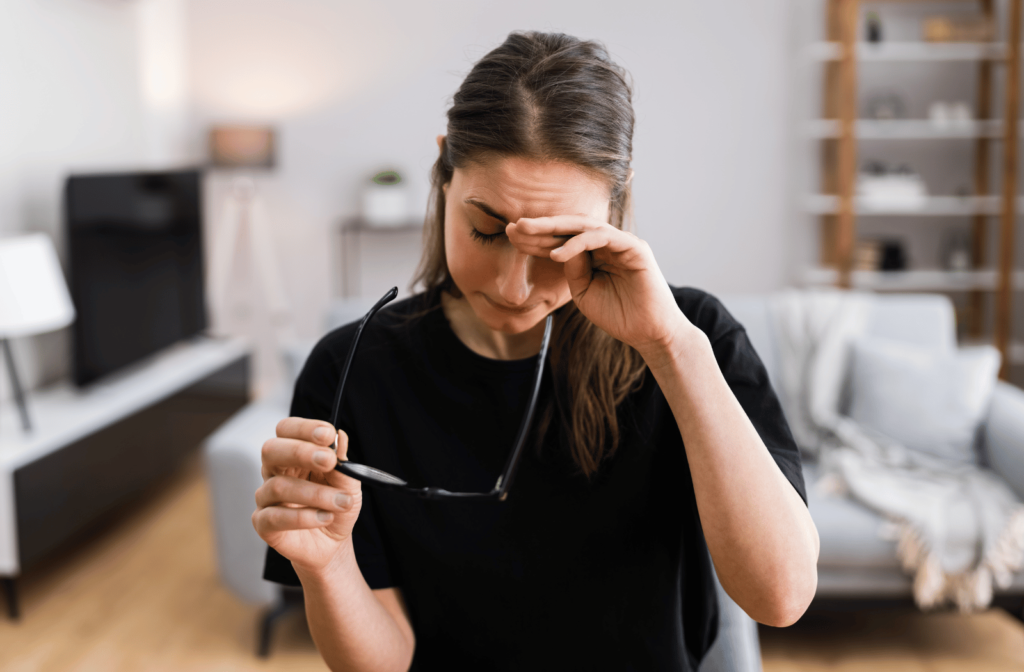If you’re one of the millions of Americans searching for relief from dry eyes, you may have heard of LipiFlow at your last eye exam. The LipiFlow Thermal Pulsation System, more simply known as LipiFlow, is a non-invasive procedure that can treat dry eyes.
While other treatments might only reduce symptoms, LipiFlow addresses the root cause of the problem. It’s a breakthrough treatment and worth learning more about.
What is Dry Eye Syndrome?
Dry eye syndrome is a condition in which the eyes do not produce enough tears or produce poor-quality tears. This irregularity in tear production can result in a variety of symptoms, usually affecting both eyes, including:
- A stinging, burning, or gritty sensation
- Light sensitivity
- Redness
- The sensation of something in your eye
- Excess production of tears and your eyes try to make up for the lack of moisture
- Blurred vision
- An increased risk of eye infections and damage to the cornea.
A low-quality tear indicates a problem with one of the three layers of your tear film:
- The outermost lipid layer, which prevents tear evaporation
- The middle aqueous layer, which contains the majority of water and nutrients
- The inner mucus layer, which helps the tear film stick to the eye
Every time you blink with a healthy tear film, your eyes are protected and moisturized. Unfortunately, many things can infer with the creation of this protective layer. Some common causes of dry eyes include:
- Meibomian Gland Dysfunction (MGD)
- Aging (dry eyes are more common in people over 50, especially women)
- Wearing contact lenses for an extended time
- Smoky, hot, or dry environments
- Staring at computer screens for a long time
Meibomian Gland Dysfunction
The meibomian glands’ purpose is to produce an oil known as meibum. This oil is vital in creating the outermost lipid layer of the tear film. Therefore, if the amount or quality of the oil changes, it can lead to meibomian gland dysfunction.
Most commonly, this reduction in oil is due to the gland openings getting clogged. There are a few different causes for this. For example, as you age, the amount of meibomian glands decreases. It can also be genetic or caused by wearing contact lenses. Some medical conditions have even been linked to MGD, including lupus, rheumatoid arthritis, and Sjogren’s syndrome.
If this blockage is allowed to stay, it can begin to die off. Your symptoms will likely only worsen if nothing is done to enable the meibum to reach your tear film again. MGD is generally detected during an eye exam, and if your optometrist catches it, that’s where LipiFlow comes in.
How does LipiFlow Work?
Meibomian gland dysfunction (MGD) causes nearly 80% of all cases of chronic dry eye. A thorough examination using a TearScience LipiView can detect these blocked glands. If they’re found, LipiFlow might be the best option to fix it.
LipiFlow uses a device that slips under your eyelids, applying heat outward while also gently massaging them. In time this will relax and open your blocked meibomian glands. Any obstructions will be warmed-up, liquified, and expelled. This treatment is one of the least-invasive procedures able to manage MGD.
The entire treatment typically only takes about 12 minutes to complete, and some people have even described it as relaxing. In addition, it’s done directly with you sitting in a comfortable chair in the doctor’s office. This means it can be a safer and more convenient treatment option for people who want to avoid medications or punctal plugs.
Benefits of LipiFlow
As mentioned earlier, the main benefit of LipiFlow is that it is a non-invasive procedure. Many other treatments for dry eyes involve medication, artificial tears, or prescription eye drops, which can have side effects and may not be suitable for everyone.
Another advantage of LipiFlow is that it can provide long-lasting relief from dry eye symptoms. Many patients who undergo the treatment experience significant improvement in their symptoms, and the effects can last for several months.
Is LipiFlow Right for You?
LipiFlow is not suitable for everyone, and it is essential to speak with a healthcare professional to determine if it is the right treatment option. Since it’s designed to treat dry eye caused by MGD, it likely won’t alleviate your symptoms if another condition causes your dry eye.
The Eye Care Team can let you know if LipiFlow will work for you. Our state-of-the-art diagnostic tools can pinpoint precisely what’s causing your dry eyes. So instead of scratching, hoping for relief, contact us and learn what we can do to help your eyes feel fresh again.



